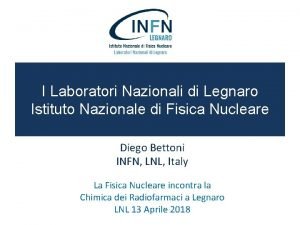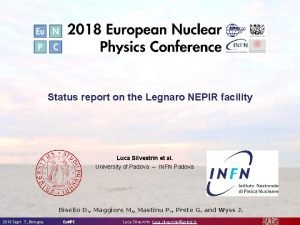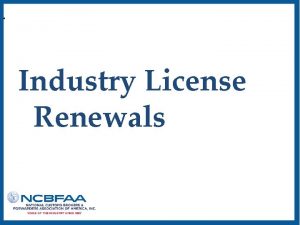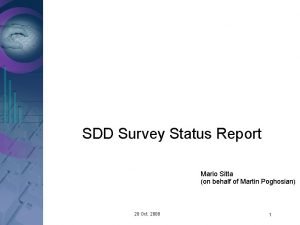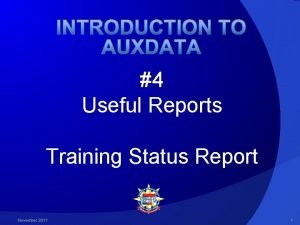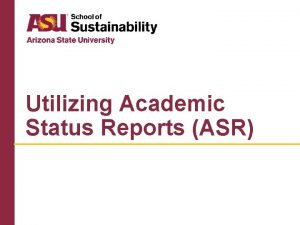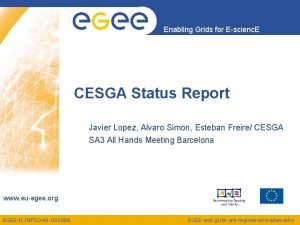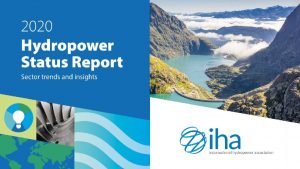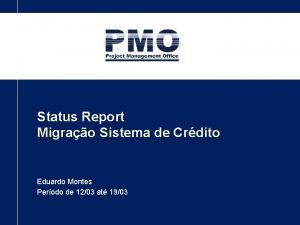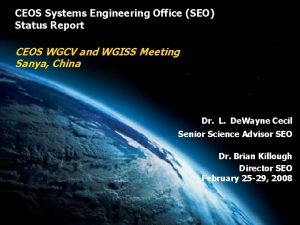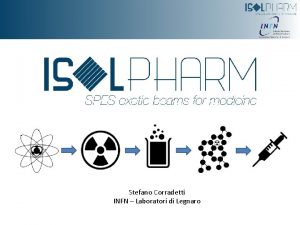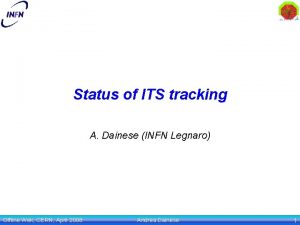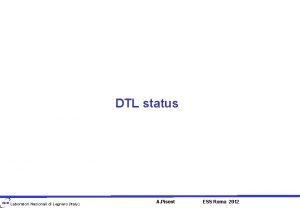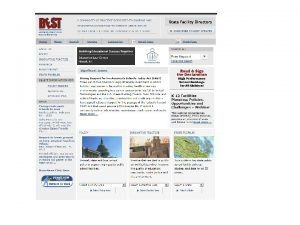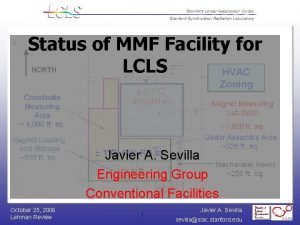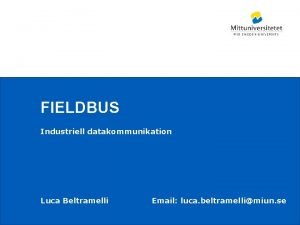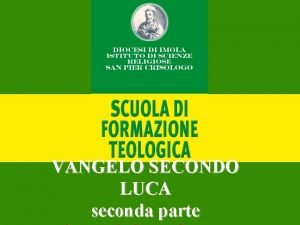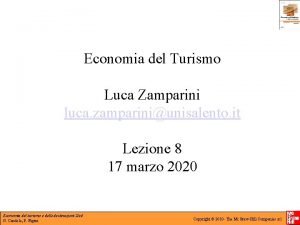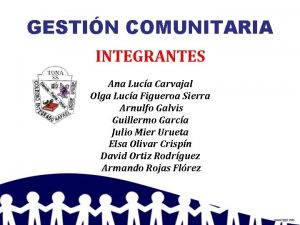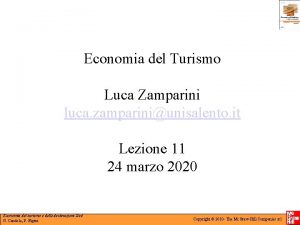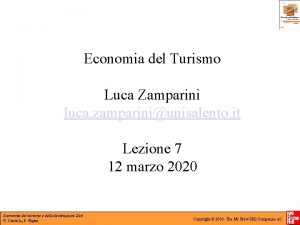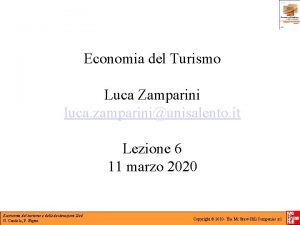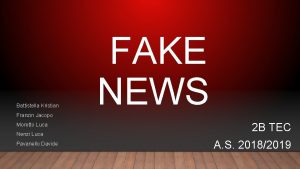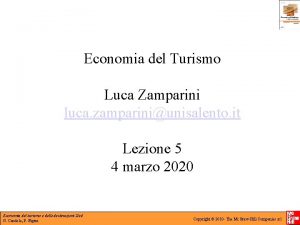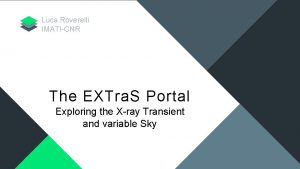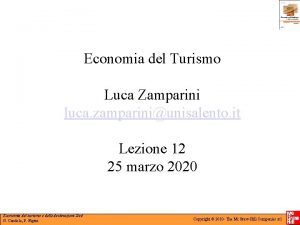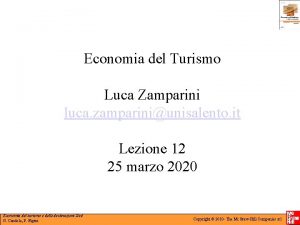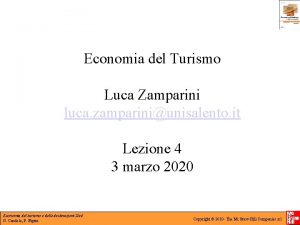Status report on the Legnaro NEPIR facility Luca

























![Ambient dose rate Prompt ambient equivalent dose rate [µSv/h] delivered by thick Be target Ambient dose rate Prompt ambient equivalent dose rate [µSv/h] delivered by thick Be target](https://slidetodoc.com/presentation_image/2e73d58c22a58b2aa6b12668d42d7f06/image-26.jpg)








- Slides: 34

Status report on the Legnaro NEPIR facility Luca Silvestrin et al. University of Padova – INFN Padova Bisello D. , Maggiore M. , Mastinu P. , Prete G. and Wyss J. 2018 Sept. 5, Bologna Eu. NPC Luca Silvestrin luca. silvestrin@unipd. it

The Legnaro Nuclear Laboratories Tandem 14 MV, protons & ions ALPI complex, ions CN (Van de Graaff, 6 MV), protons, deuterium and helium AN 2000 (2 MV Van de Graaff), protons, deuterium and helium; microbeam 2018 Sept. 5, Bologna Eu. NPC Proton implanter 100 ke. V Luca Silvestrin luca. silvestrin@unipd. it 35 -70 Me. V cyclotron, protons

Background Practical general-purpose neutron facilities are of two types: 1. research reactors (fission reactions) 2. accelerator-driven sources (non-fission nuclear reactions) § Large High-energy accelerator spallation sources § Compact low energy accelerators (non-spallation sources) Ø Reactor sources play an essential role in materials characterization and other research purposes, but some are going into closure (Berlin; Orpheé; …). → Ø Present and future high-energy spallation sources (ISIS at RAL; ESS; …), in spite of their high neutron yields and sophisticated instrumentation achievable at great costs (expensive), they will barely fulfill the demands of the large neutron user community for materials research, let alone of other emerging important fields and disciplines. → → 2018 Sept. 5, Bologna Eu. NPC Luca Silvestrin luca. silvestrin@unipd. it 3

LINUS facility Compact Accelerator Driven Neutron Sources (CANS) have shown promising capabilities in bridging the capacity insufficiency and the expanse of cross-disciplinary neutron applications. LINUS consists of: q Legnaro Slow Neutron Source (LSNS) RFQ LSNS encompasses state-of-the-art Accelerator-driven, Brilliant, and Compact Neutron Sources (ABC NS) NS and cross-disciplinary R&D. It delivers cold, thermal, and epithermal neutrons. q NEutron and Proton IRradiation (NEPIR) complex NEPIR is driven by the high power 30 -70 Me. V proton cyclotron (Imax=750 u. A) of the SPES project and consists of 3 subsystems: I. QMN: delivers quasi mono-energetic neutrons in the 20 -70 Me. V range II. ANEM: delivers atmospheric-like neutrons in the 1 -70 Me. V range III. PROTON: a direct proton (35 -70 Me. V) irradiation line (not this talk) 2018 Sept. 5, Bologna Eu. NPC Luca Silvestrin luca. silvestrin@unipd. it 4

LSNS is green-field project (no constraints) GOAL: ensure an expansive neutron R&D landscape and a thriving community of neutron users. It will combine: q cutting-edge technologies achieved at LNL • high-power, high-current proton RFQ accelerator; • neutronics technologies; • High power Li and Be production targets (eg. MUNES). Be target for BNCT (MUNES project) Trasco proton accelerator: RFQ, 5 Me. V 40 m. A Microchannel cooled thin target. Performance better than 3. 5 k. W/cm 2 q optimizable infrastructure of various neutron beamlines and end-stations for a suite of R&D user facilities using cold, thermal and epithermal neutrons. 2018 Sept. 5, Bologna Eu. NPC Luca Silvestrin luca. silvestrin@unipd. it 5

LSNS Modular facility structure Proton beam PSDS (Pulse Selection and Distribution Station) q CNTS (Cold Neutron Target Station) • • Be target Cryogenic moderator of solid methane Reflector (graphite or water) Up to 6 ports to expermental halls q TNTS (Thermal Neutron Target Station) • • Identical design to CNTS but with water (abient temperature) moderator Initially three ports q LENOS (astrophysics) • • Modular structure Mild radioactivity by low-energy protons ( 5 Me. V) Both Short Pulse (SP) and Long Pulse (LP) options Cryogenic and gas handling systems for hydrogenous moderator CNTS and TNTS are ideal for experimental validation of novel moderator systems 2018 Sept. 5, Bologna Eu. NPC Luca Silvestrin luca. silvestrin@unipd. it 6

NEPIR Fast neutrons (En > 1 Me. V) • Three subsystems: QMN, QMN ANEM and PROTON • Originally conceived to study of radiation damage effects in electronic devices and systems induced by: - flight-altitude and sea-level atmospheric neutrons - solar protons • They will be also used to perform: • physics cross-section measurements, • biological samples irradiation, • shielding performance evaluation, • material degradation studies, • … 2018 Sept. 5, Bologna Eu. NPC Luca Silvestrin luca. silvestrin@unipd. it 7

NEPIR experimental hall Completed SPES infrastructure NEPIR HRM S ISOL 1 1+ are a ISOL 2 SPES Radioisotope R&D and production Existing (empty) NEPIR experimental hall 2018 Sept. 5, Bologna Eu. NPC Luca Silvestrin luca. silvestrin@unipd. it 8

(Fast) Quasi Monoenergetic Neutrons Forward ( = 0°) QMN energy spectra beams for different proton beam energies on a thin (non beam-stopping) Lithium target [TIARA facility, Japan]. Performance of different QMN sources (from Lithium ) beams around the world. Energy of the protons (Me. V) LAB Distance (m) of target to the test point Mono-energetic neutron (peak) flux at the test point TIARA (Japan) 40 -90 12. 9 ~3. 5 -5 103 n cm-2 s-1 for max 1 -3 A CYRIC (Japan) 14 -80 1. 2 106 n cm-2 for 3 A RCNP (Japan) 100 -400 10 104 n cm-2 s-1 for 1 A i. THEMBA (South Africa) 25 -200 8 1 -1. 5 104 n cm-2 s-1 for typical 3 A ANITA (Sweden) 25 -200 3. 73 ~ 3 105 n cm-2 s-1 for max 5 -10 A NFS (France) UNDER CONSTR. 1 -40 5 ~ 8 107 n cm-2 s-1 for 50 A, 40 Me. V QMN (LNL) PROPOSED 30 -70 3 ~ 5 105 n cm-2 s-1 for 10 A, 70 Me. V 2018 Sept. 5, Bologna Eu. NPC Luca Silvestrin luca. silvestrin@unipd. it 9

QMN q Multi-disciplinary interest q Energy dependent neutron-induced effects (e. g. measure the cross-section vs energy curve) q Quasi ideal to study energy dependence • Not 100% mono-energetic • Strong angular dependence can be used to subract away the wrong energy neutrons 2018 Sept. 5, Bologna Eu. NPC Luca Silvestrin luca. silvestrin@unipd. it 10

“Wrong-energy tail” correction The number of neutron-induced effects due to forward going neutrons can be corrected by subtracting the number of effects at angles (typically in the 15 o-30 o range). es l g n da e x i F gle n a able i r a V • flexibility: adjustable angles • but challenging to design magnet/target system 2018 Sept. 5, Bologna Eu. NPC RIKEN-like movable collimator Luca Silvestrin luca. silvestrin@unipd. it 11

QMN Neutron yield angular dependence The “good” truly mono-energetic neutrons are produced mainly in the direction of the proton beam (forward, = 0); wrong-energy neutrons are not as directional. Neutron yield (n Me. V-1 A-1 sr-1) thin Lithium Angular dependence at Eproton = 70 Me. V Kamata S. , Itoga T. , Unno Y. , Baba M. (CYRIC ANNUAL REPORT 2005) Journal of the Korean Physical Society, Vol. 59, No. 2, August 2011, pp. 1676 -1680 2018 Sept. 5, Bologna Eu. NPC Neutron yield (n Me. V-1 A-1 sr-1) thin Beryllium Luca Silvestrin luca. silvestrin@unipd. it 12

Wrong energy tail correction 2018 Sept. 5, Bologna Eu. NPC Luca Silvestrin luca. silvestrin@unipd. it 13

Lastest NEPIR layout 2018 Sept. 5, Bologna Eu. NPC Luca Silvestrin Layout of the NEPIR facility in the final stage, including QMN and ANEM sources inside a heavily shielded bunker and a independent direct proton beam line. On top of the bunker the control room (with remotely operated computers) and the activated air management system luca. silvestrin@unipd. it 14

Zoom NEPIR bunker layout Detail of the NEPIR bunker showing the QMN and ANEM sources, the beam optics and the beam dump. A multi-angle collimator will select neutrons from the QMN source with suitable angles. 2018 Sept. 5, Bologna Eu. NPC Luca Silvestrin luca. silvestrin@unipd. it 15

QMN dose rate with FLUKA Fluka simulation geometry of the NEPIR bunker and irradiation hall (vertical section through the beam axis). In this variant: the concrete shielding is 1. 5 m thick + a Fe collimator is 80 cm thick. Panels of borated (5%) polyethylene, 20 cm thick, coat the shielding and the internal surface of the hall walls. Prompt ambient equivalent dose rate delivered by the ANEM target with a proton beam current of 1 µA. Access maze Bunker vertical cross section through the beamline 2018 Sept. 5, Bologna Eu. NPC Luca Silvestrin luca. silvestrin@unipd. it

Atmospheric Neutron EMulator ANEM Neutrons in cosmic ray air-showers are a widening problem for Industry: • Aviation • Automotive • Trains • Information technolgy and Infrastructure • Medical (e. g. pace makers, …) “Radiation induced single events could be happening on everyone’s PC, but instead everybody curses Microsoft. ” Paul Dodd, Sandia National Laboratories 2018 Sept. 5, Bologna Eu. NPC Luca Silvestrin luca. silvestrin@unipd. it 17

Atmospheric neutrons Energy distribution of fast (E>1 Me. V) neutrons at sea level Data points by Gordon (2004), sea level, New York city, outdoors, mid-level Solar activity JEDEC fit 1989 dashed JEDEC fit 2006 continuous The standard reference spectrum used by the JEDEC Solid State Technology Association, an independent semiconductor engineering trade organization and standardization body. n(E>1 Me. V) = 21 n cm-2 hr-1 (*) Typical value for SEU Plateau = 10 -14 cm 2/bit gives a low SEU rate ~32 SEU / (month 64 GByte) Of these: • 42% are in 1 -10 Me. V range • 47% are in 1 -20 Me. V range • 65% are in 1 -65 Me. V range (*) At flight altitudes the flux shape is similar, but 300 times more intense. 2018 Sept. 5, Bologna Eu. NPC Boring! I need to speed these tests up… I want an accelerator! Luca Silvestrin luca. silvestrin@unipd. it 18

Atmospheric neutrons test facilities The neutron differential energy spectra at accelerator electronic test facilities used for accelerated neutron SEE testing. The JEDEC reference spectrum is the black curve multiplied by an acceleration factor F = 109. SPES 70 Me. V → Using protons, I 10 A (P<1 k. W) 2018 Sept. 5, Bologna Eu. NPC proton Luca Silvestrin luca. silvestrin@unipd. it 19

ANEM: a continuous energy neutron production target A novel rotating, composite, high power target made of thick Be and W. A W disk and a Be circular sector rotate on a common water cooled hub and alternatively intercept the beam. The effective atmospheric-like neutron spectrum in the 1 -65 Me. V range is composed directly, without the use of moderators. The target is designed to tolerate a maximum current Ibeam = 30 A (2. 1 k. W), delivering at a distance of 6 m, a flux of neutrons (E = 1 -65 Me. V range) 109 times the natural one, comparable with the highest factor to be used at Chip-IR facility. Idea of P. Mastinu (LNL) Be off axis proton beam W Thickness Be: 26 mm (*) W: 5 mm Target prototype almost ready for thermal test with electron-gun (*) The Be sector does not stop the protons (to avoid damage); most of the protons pass through without causing nuclear reactions. The emerging low energy protons are stopped by the W disk. 2018 Sept. 5, Bologna Eu. NPC Luca Silvestrin luca. silvestrin@unipd. it 20

Spectra combination The combination of 20% Be spectrum and 80% W spectrum yields the best fit of the atmospheric spectrum, without use of moderation. The acceleration factor corresponding to a 1 µA current is 3 × 108 neutron flux at 3 m for 70 Me. V proton 1 A (MCNPX) Differential flux n / ( Me. V cm 2 s) 1 E+06 atmospheric x (3 x 10^8) W component (80%) 1 E+05 Be component (20%) effective 1 E+04 1 E+03 1 E+02 1 10 100 Neutron energy (Me. V) 2018 Sept. 5, Bologna Eu. NPC Luca Silvestrin luca. silvestrin@unipd. it 21

NEPIR Phase 0 (limited funds) The neutron facility is currently financed by SPARE (Space Radiation Shielding) SPARE is a project involving ASI, INFN, Centro Fermi and other institutions, consisting of a test campaign of active and passive shielding materials for the human activity on Mars, using proton and fast neutron beams at the proton cyclotron facility at TIFPA (Trento Institute for Fundamental Physics Applications) with Ep = 70 -228 Me. V, and at the LNL NEPIR facility Ep= 30 -70 Me. V. With this limited funds we are designing a Phase-0 layout and beginning the construction of the facility. 2018 Sept. 5, Bologna Eu. NPC Luca Silvestrin luca. silvestrin@unipd. it 22

Facility Phase-0 floor plan Layout of the NEPIR Phase 0 facility: a thick Be white spectrum source will exploit the shielding of the cyclotron hall to minimize the construction of additional shielding. The maximum proton current will be 1 µA and the target will be irradiated in air. The direct proton beam line will be completed in a second moment. 2018 Sept. 5, Bologna Eu. NPC Luca Silvestrin luca. silvestrin@unipd. it 23

NEPIR phase 0 Fluka code geometry Top view The target is a Be core, 27 mm thick, with an aluminum housing, located inside the conduit between the cyclotron hall and hall A 9. It is air cooled: the proton beam is extracted in air through an extraction window. Side view 2018 Sept. 5, Bologna Eu. NPC Rendering of the 50 µm thick Ti foil for beam extraction in air and its assembly Luca Silvestrin luca. silvestrin@unipd. it 24

Thick Be white neutron spectra at different proton energies Be 27 mm, different proton energies Neutron spectra (simulated with MCNP) at test point for different energies of the impinging proton beam. Comparison of the neutron spectra generated by 70 Me. V protons and 60 Me. V protons (rescaled by a factor 1. 15). The difference between neutron spectra at different energies returns a quasi-rectangular neutron energy distribution with controllable width, down to few Me. V. 2018 Sept. 5, Bologna Eu. NPC Luca Silvestrin luca. silvestrin@unipd. it 25
![Ambient dose rate Prompt ambient equivalent dose rate µSvh delivered by thick Be target Ambient dose rate Prompt ambient equivalent dose rate [µSv/h] delivered by thick Be target](https://slidetodoc.com/presentation_image/2e73d58c22a58b2aa6b12668d42d7f06/image-26.jpg)
Ambient dose rate Prompt ambient equivalent dose rate [µSv/h] delivered by thick Be target (27 mm) with a proton beam current of 1 µA. The dose delivered to the cyclotron hall is the main factor driving the choice of the target position. The target is located inside the conduit between the cyclotron hall and hall A 9 (exact position to be determined) 2018 Sept. 5, Bologna Eu. NPC Luca Silvestrin luca. silvestrin@unipd. it 26

QMN Phase-0 A vertical magnet is used to deflect the exiting proton beam towards a beam dump inside the slanted conduit. A small bunker isolates the QMN target from the cyclotron hall. 2018 Sept. 5, Bologna Eu. NPC Luca Silvestrin luca. silvestrin@unipd. it 27

CONCLUSION • The NEPIR facility is partially financed and a collaboration with TIFPA is established for the design and construction of a neutron irradiation facility, with complementary energy in the 30 -70 Me. V rage; • The basic design of the NEPIR facility, its beam-optics, the beam dump and the ANEM target is defined; • The design of the QMN source requires the experimental validation of the models used for the simulations, and minor adjustments are expected before we can complete the target design; • An ANEM prototype exists, with an aluminum test disk and an electron gun system (under construction) for thermal tests to be completed in the next months; Our present goal is to construct, operate and characterize the NEPIR Phase-0 facility ASAP. This will open up new neutron research fields in Legnaro Laboratories that will lead up to: • building the final NEPIR facility • the realization of the LSNS project. 2018 Sept. 5, Bologna Eu. NPC Luca Silvestrin luca. silvestrin@unipd. it 28

The end Thank you for your attention Extra slides follow 2018 Sept. 5, Bologna Eu. NPC Luca Silvestrin luca. silvestrin@unipd. it 29

LSNS target ststion In the case of the CNTS, a cryogenic system and a gas handling system (not shown) will cool the moderator medium (e. g. solid methane) to ~10 K. Target station core Cold neutrons target station layout A schematic layout of the target station’s inner core, showing a defocused proton beam incident on a thin target (Be) and a moderator above for the generation of cold neutrons which exit through the beam ports. 2018 Sept. 5, Bologna Eu. NPC Luca Silvestrin luca. silvestrin@unipd. it 30

Schematic layout of the LSNS facility TNTS • • • Room for future accelerator upgrades High-Intensity Powder Diffractometer (HIPD) Multi-Purpose Materials Interrogation (MPMI) Neutronics, Device and Detector Development (NDDD) CNTS • Small-angle neutron scattering (SANS) • General-Purpose Neutron Reflectometer (GPNR) • Cold-Neutron Imaging & Radiology (CNIR) • Cold-Neutron Instrumentation Development (CNID) • … 2018 Sept. 5, Bologna Eu. NPC Luca Silvestrin luca. silvestrin@unipd. it 31

Radiation effects on electronics If a neutron (proton) is fast enough… a Single Event Effect (SEE) may occur (it depends on where it strikes) Reference cross-section for “Soft Errors” such as SEUpset in digital electronics: SEU = 10 -14 cm 2/bit, Nbits per device = 4 106 2018 Sept. 5, Bologna Eu. NPC Luca Silvestrin luca. silvestrin@unipd. it 32

Time structure A conceptual scheme of distribution of proton pulses of different time structures to the epithermal-, thermal- and cold neutron applications. The time axes are not in scale, numbers are ballpark figures. In the TOF mode we assume a chopper, upstream of the RFQ, will pulse the proton beam at 125 k. Hz with a pulse width (FWHM) of ~200 ns. These short pulses are nominally delivered to the LENOS target station and shorten further to 1 -2 ns by a buncher. The following time appropriation takes place: Proton beam Pulse and Selection Distribution Station 2018 Sept. 5, Bologna Eu. NPC 1. a clock starts at t 1 for the accumulation of the short pulses to achieve a pulse width of ~10 s in conjunction with the defocusing of the beam to a cross-section of 10 cm x 10 cm. 2. Afterward this proton pulse is delivered to TNTS. This process is to repeat every 20 ms so as to enable a short pulse (SP) neutron source running at 50 Hz. 3. After each SP the clock starts at t 2 to accumulate a long pulse (LP) of ~500 s width, defocused, then to feed the CNTS. This process repeats every 40 ms for a LP cold neutron source running at 25 Hz. Luca Silvestrin luca. silvestrin@unipd. it 33

LSNS numbers Legnaro Slow-Neutron Source (LSNS) driver proton RFQ (Eproton = 0. 08 -5 Me. V, 40 m. A (200 k. W), CW or Pulsed) Cold neutrons Thermal neutrons LENOS Medical therapy Be-target, Li-target, Be-target 25 Hz 500 µs LP 50 Hz 10 µs SP 125 k. Hz 200 ns CW duty cycle ~1/800 duty cycle ~1/2000 bunched to 2 ns SP duty cycle = 1 duty cycle ~1/40 Imaging & radiography Diffraction Small-angle scattering Neutron interrogation Nuclear astrophysics BNCT (thermal) TOF BNCT Neutron reflectmetry Instrumentation R&D Nuclear astrophysics Activation (epithermal) Instrumentation R&D (neutronics, polarization. . . ) 2018 Sept. 5, Bologna Eu. NPC Luca Silvestrin luca. silvestrin@unipd. it 34
 Rilab data sc
Rilab data sc Nepir
Nepir Difference between progress report and status report
Difference between progress report and status report Nvocc license application
Nvocc license application Survey status report
Survey status report Enter vendor name
Enter vendor name Training status report
Training status report Academic status report
Academic status report Status report
Status report 2020 hydropower status report
2020 hydropower status report Convercent/report
Convercent/report What is rag report
What is rag report Work status report from doctor
Work status report from doctor Status report executivo
Status report executivo Seo status report
Seo status report Annual status of education report
Annual status of education report Kaiser code gray
Kaiser code gray Biện pháp chống mỏi cơ
Biện pháp chống mỏi cơ độ dài liên kết
độ dài liên kết Trời xanh đây là của chúng ta thể thơ
Trời xanh đây là của chúng ta thể thơ Chó sói
Chó sói Thiếu nhi thế giới liên hoan
Thiếu nhi thế giới liên hoan điện thế nghỉ
điện thế nghỉ Fecboak
Fecboak Một số thể thơ truyền thống
Một số thể thơ truyền thống Thế nào là hệ số cao nhất
Thế nào là hệ số cao nhất Slidetodoc
Slidetodoc Sơ đồ cơ thể người
Sơ đồ cơ thể người Số nguyên tố là
Số nguyên tố là đặc điểm cơ thể của người tối cổ
đặc điểm cơ thể của người tối cổ Các châu lục và đại dương trên thế giới
Các châu lục và đại dương trên thế giới Mật thư anh em như thể tay chân
Mật thư anh em như thể tay chân Tư thế worm breton
Tư thế worm breton ưu thế lai là gì
ưu thế lai là gì Tư thế ngồi viết
Tư thế ngồi viết
